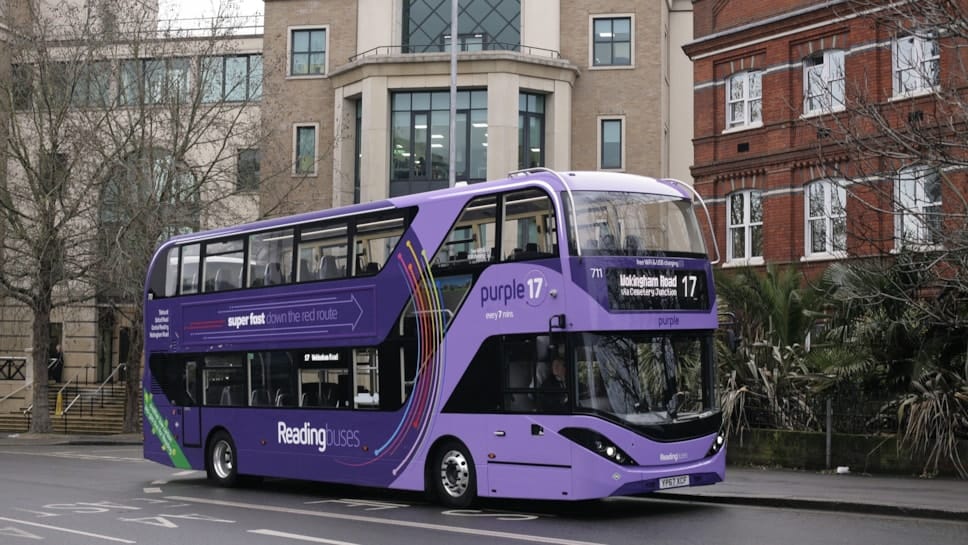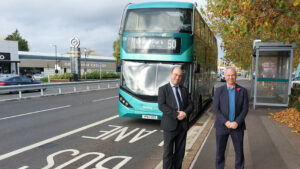Bus usage in Reading has grown by 11.4% to 19.5 million passenger journeys in the last year – significantly above the national average increase, according to newly published government figures.
The borough has the third highest number of bus passenger journeys per head of population in England, outside of London, after Brighton and Nottingham.
The rise in passenger numbers follows the Council’s work to encourage greater use of public transport through its £26m Bus Service Improvement Plan (BSIP).
Statistics from the Department for Transport (DfT) show that an extra two million passenger journeys were taken in Reading in 2023/24 compared to the previous year. The 11.4% increase is 54% above the average growth in England (7.4%) and double that of the south-east (4.7%).
There were 109.4 bus journeys per head of population in Reading in 2023/24 which is a 9.8% increase on the previous year. Reading is one of only three local transport authorities which had more than 100 journeys per head per year.
Bus journeys per head of population in Reading are 74% above the England average (62.9) and 240% above the south-east average (32.1).
The Council was awarded £26m grant funding for its BSIP programme by the DfT in January 2023 to improve services to encourage more people to travel by bus in Reading.
Capital schemes being delivered include a programme of new bus lanes around the town, three of which have already been delivered in London Road (Cemetery Junction) and two in Oxford Road.
Phase 5 of the South Reading Bus Rapid Transit scheme is currently under way to allow buses to avoid pinch points on the route, while retaining the same capacity for all other traffic. This includes a new pedestrian and cycle bridge that will be installed over the River Kennet.
Other initiatives have included the introduction of expanded community Buzz 9 and Buzz 18 bus services, creation of the Reading All-Bus multi-operator discount scheme with tap on, tap off technology and discounted £1 fare for parking and return journeys on park and ride services.
Reading Buses has one of the most modern fleets in the country, having made a huge investment in vehicles to provide the highest level of comfort, safety and convenience for passengers, as well as running vehicles to the latest environmental standards. Next year, the company will take delivery of 24 zero emission electric buses through the ZEBRA 2 project in partnership with the Council.
There have also been improvements to passenger facilities, including better accessibility and new real time displays at bus stops.
Cllr John Ennis, Lead Councillor for Climate Strategy and Transport, said:
“The latest government figures show a big increase in the number of people using Reading’s excellent bus network. They highlight how hugely important buses are for so many people travelling around the borough, whether it be for work or pleasure.
“Through our Bus Service Improvement Plan, the Council has been working with partners on several schemes to make bus travel even quicker, more reliable, convenient, cheaper and easier to use.
“These encouraging statistics follow on from recent news that usage of Reading’s train stations are on the increase. The Council intends to continue with its ambitious plans to encourage even more people to take public transport in preference to the private car, to reduce traffic congestion, cut carbon emissions and improve air quality to benefit the health of Reading’s residents.”
PIC-READING BC






















